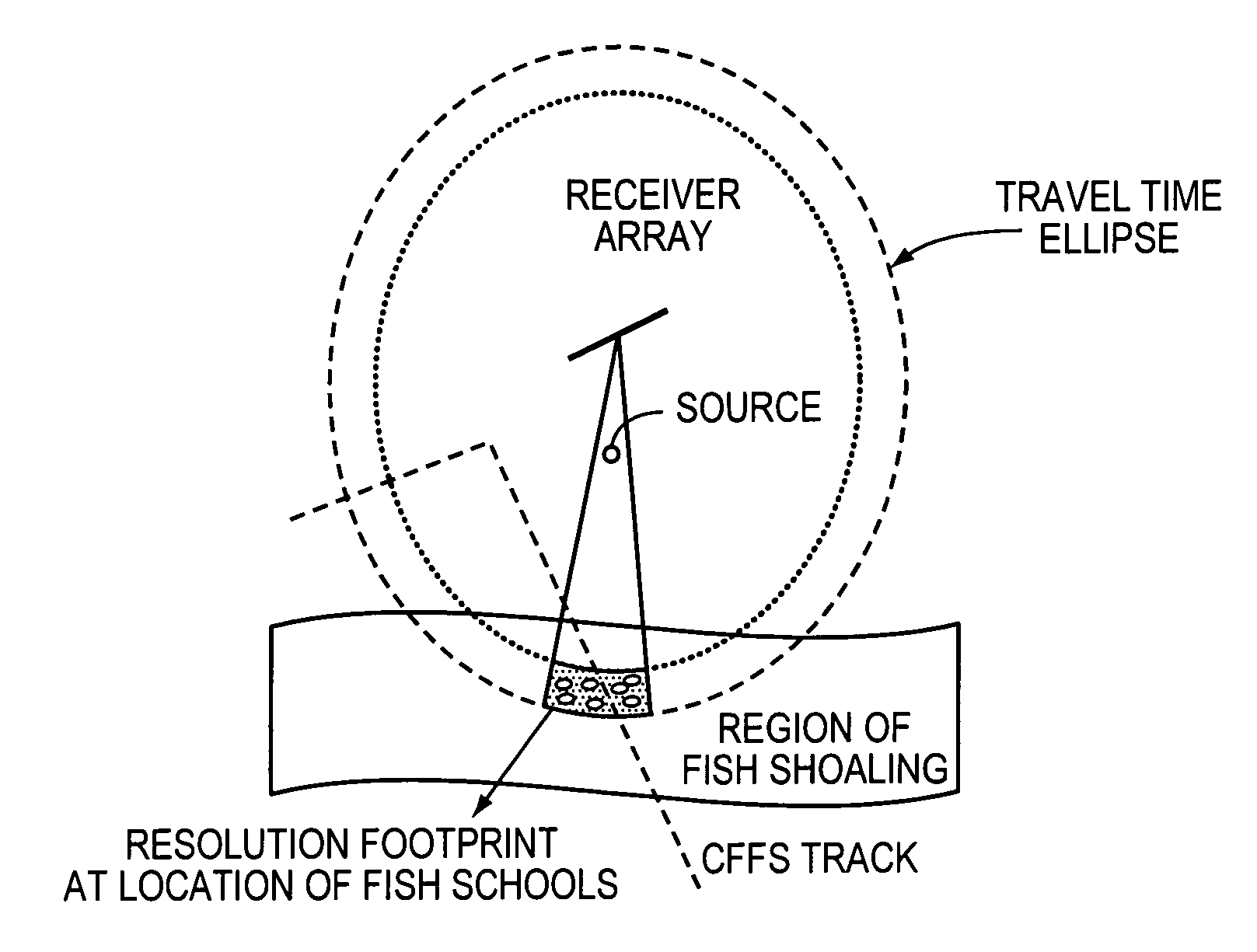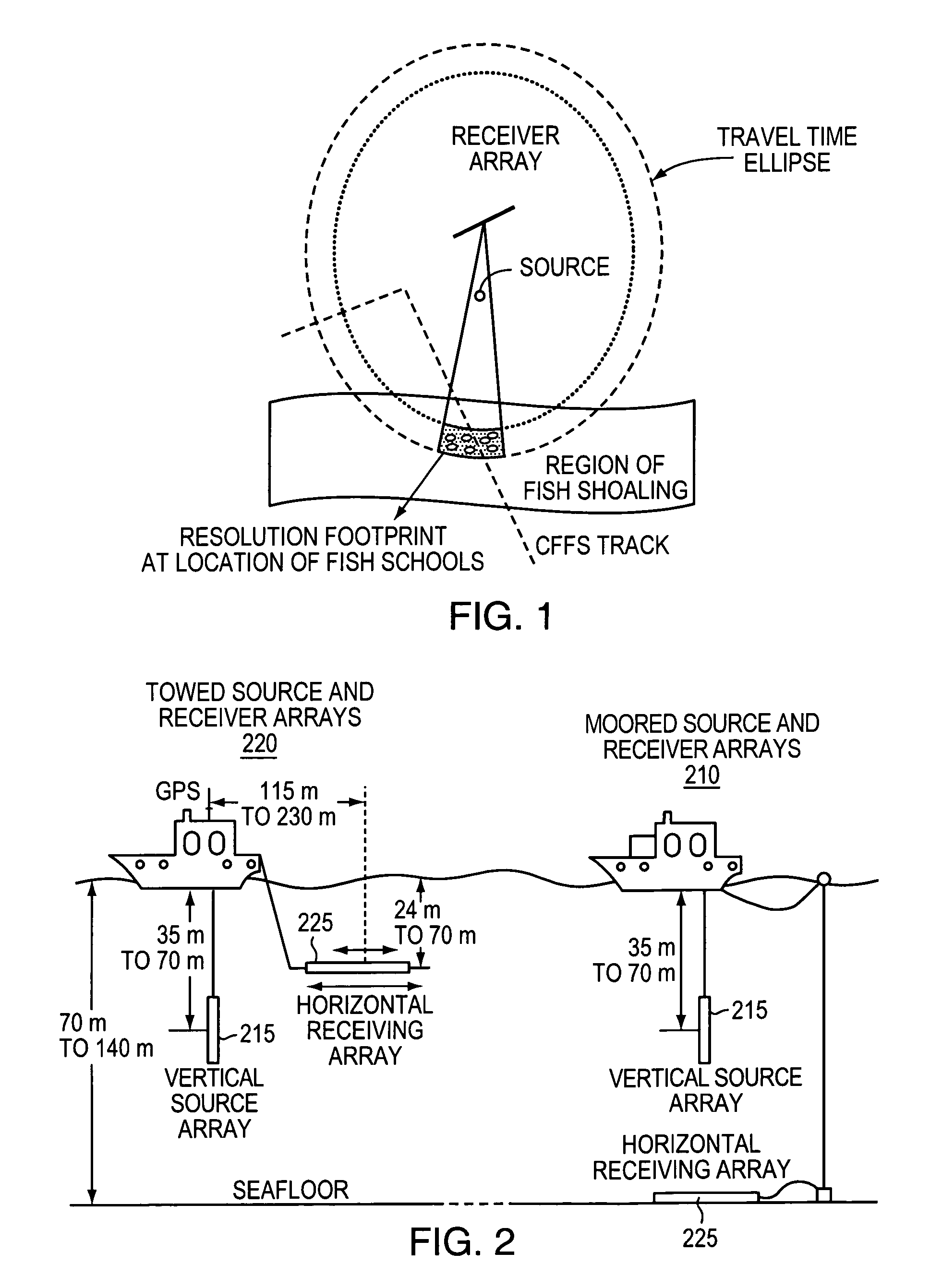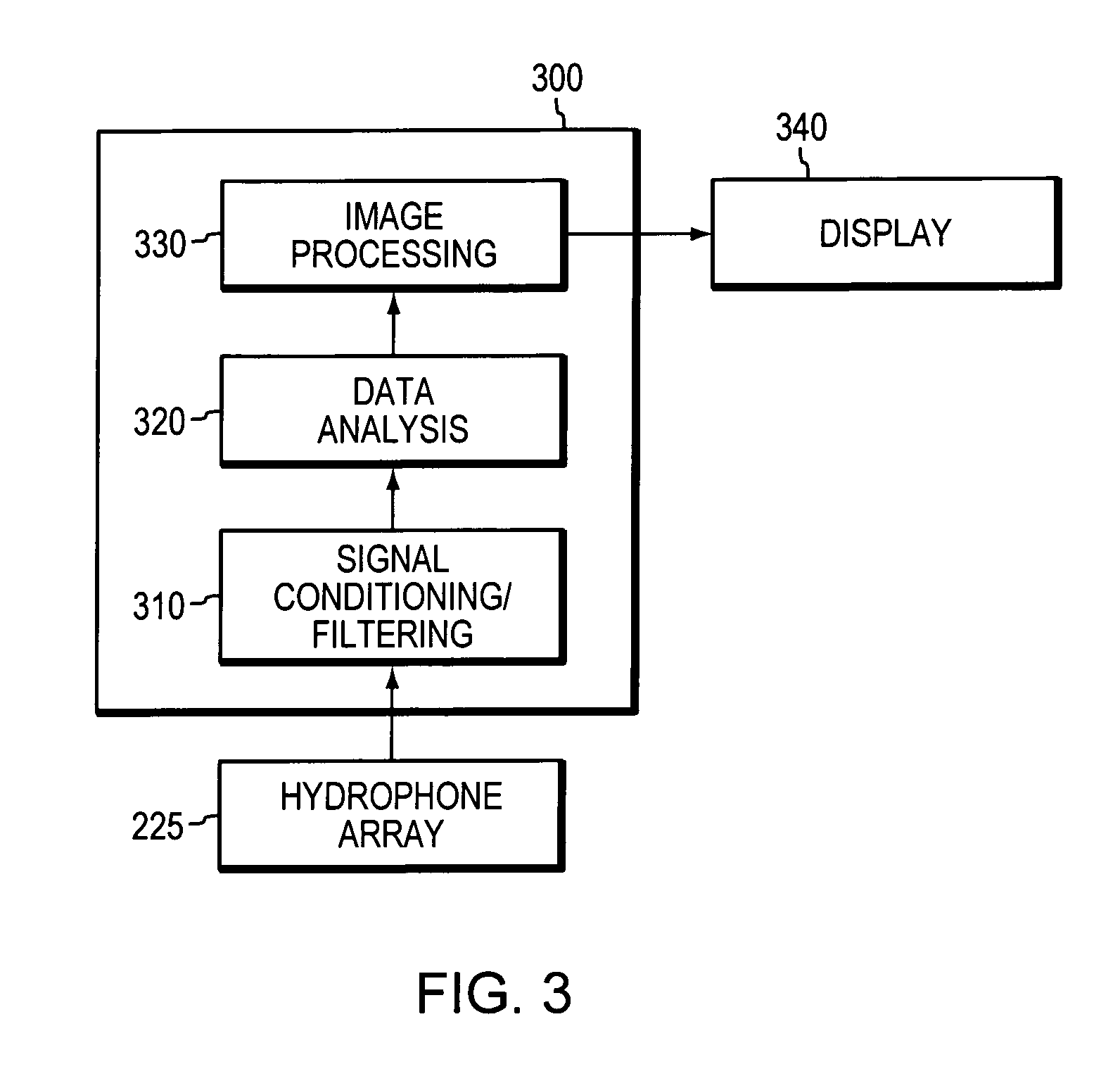Continuous, continental-shelf-scale monitoring of fish populations and behavior
a technology applied in the field of continuous, continental-scale monitoring of fish populations and behavior, can solve the problems of incomplete abundance and behavior picture, difficult to detect by conventional methods, and large separation of isolated fish schools
- Summary
- Abstract
- Description
- Claims
- Application Information
AI Technical Summary
Benefits of technology
Problems solved by technology
Method used
Image
Examples
Embodiment Construction
[0023]1. Basic Approach
[0024]In an exemplary implementation, the location of the source and receiver are known, and the time of source transmission is known. Scattered returns from environmental features such as fish are then continuously received by a horizontal line array and charted in horizontal range and bearing, preferably by temporal matched filtering and beamforming using the known propagation speeds of acoustic modes in the ocean (e.g., as determined from local sound speed measurements). The resulting image is an instantaneous snapshot of the ocean environment over the two-way travel times of the signal returns spanning 360 degrees in azimuth. Each pixel in such a raw image has units of sound pressure level in decibels relative to a reference pressure. The range resolution is fixed at the mean sound speed, c=1475 m / s, divided by twice the signal bandwidth. Azimuthal resolution in radians varies as the acoustic wavelength λ divided by the projected array length Lcos θ, where...
PUM
 Login to View More
Login to View More Abstract
Description
Claims
Application Information
 Login to View More
Login to View More - R&D
- Intellectual Property
- Life Sciences
- Materials
- Tech Scout
- Unparalleled Data Quality
- Higher Quality Content
- 60% Fewer Hallucinations
Browse by: Latest US Patents, China's latest patents, Technical Efficacy Thesaurus, Application Domain, Technology Topic, Popular Technical Reports.
© 2025 PatSnap. All rights reserved.Legal|Privacy policy|Modern Slavery Act Transparency Statement|Sitemap|About US| Contact US: help@patsnap.com



